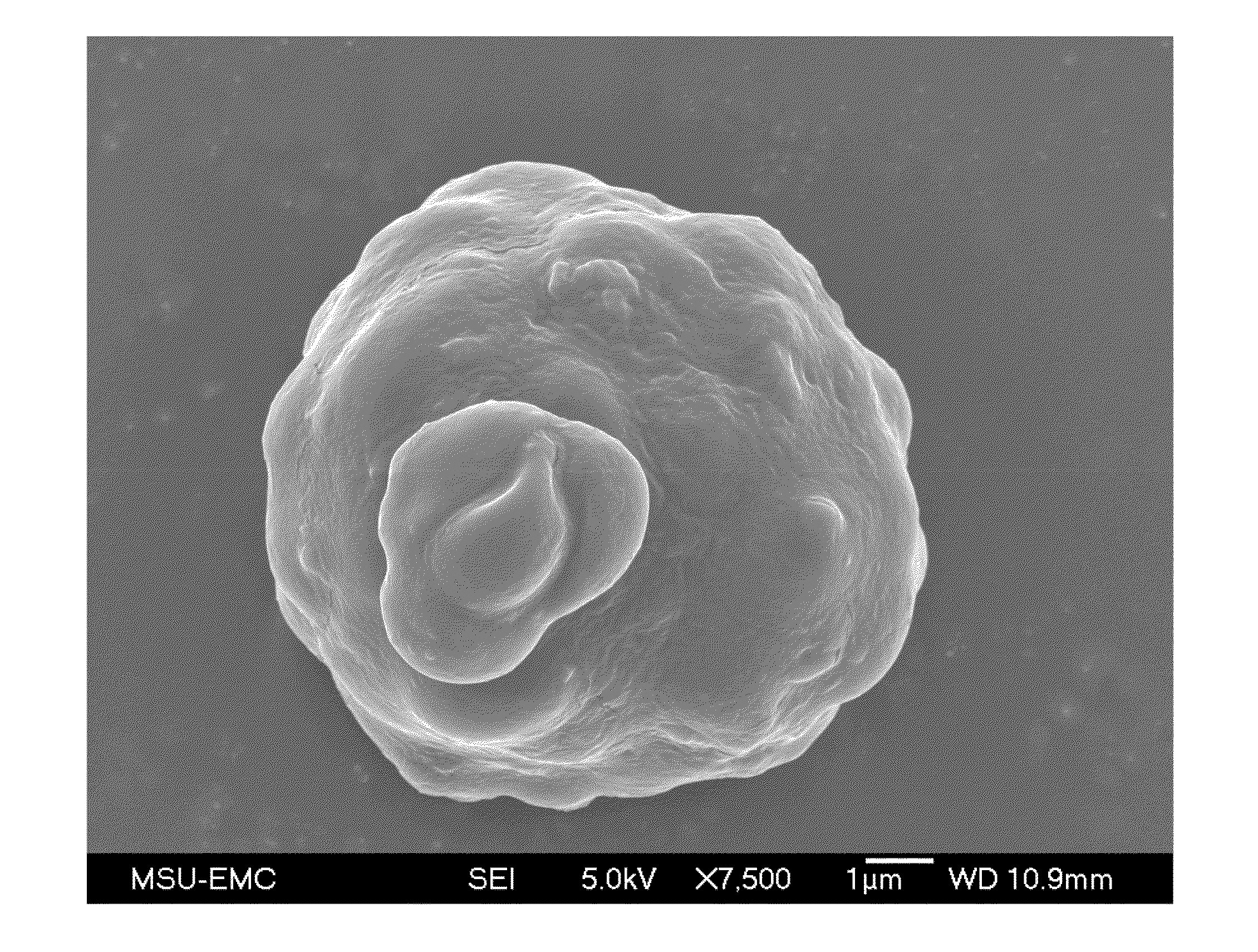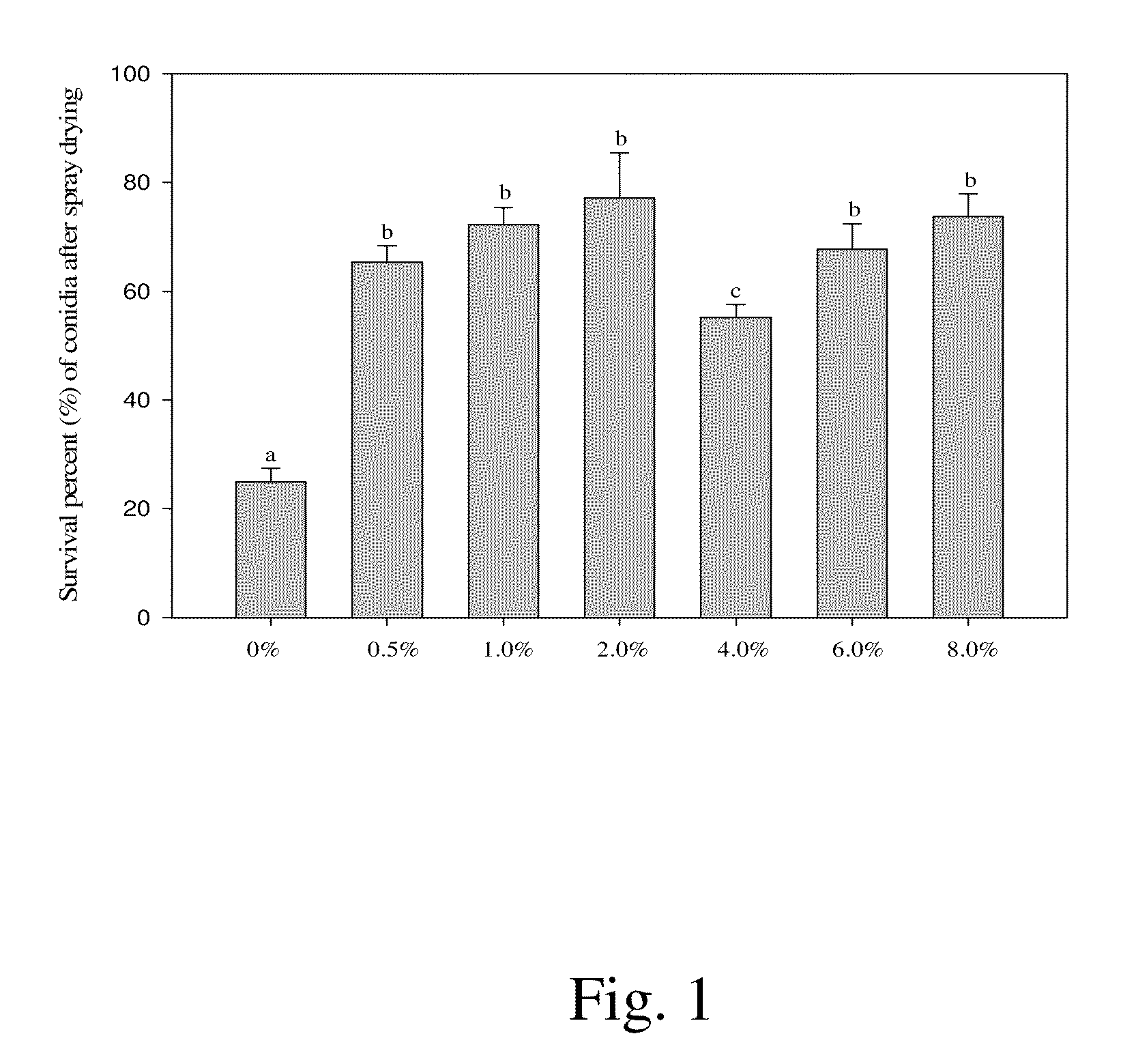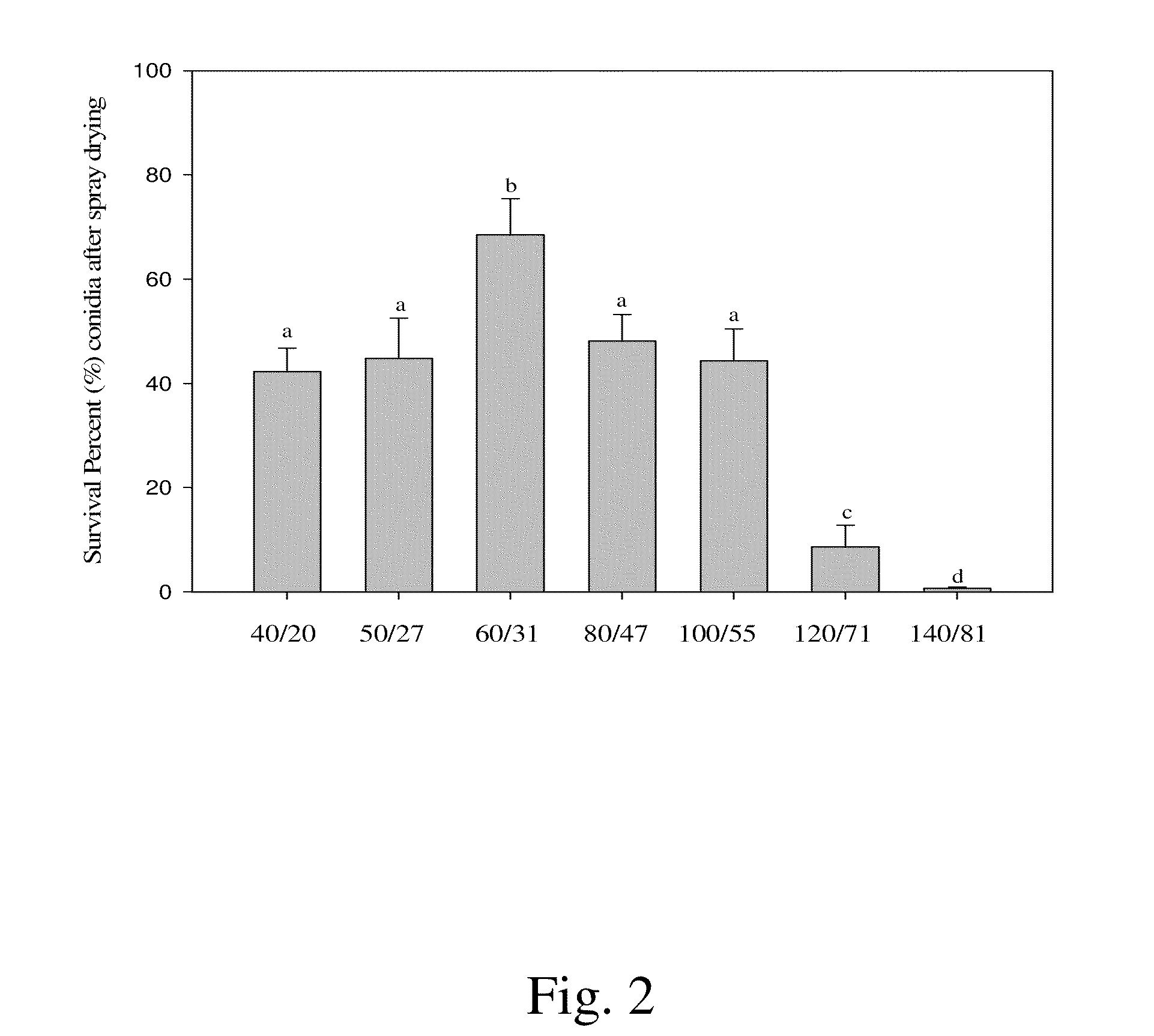Method for Encapsulation of Microparticles
a microparticle and encapsulation technology, applied in microorganisms, on/in biological cells, enzymology, etc., can solve the problems of i>trichoderma /i>spp., inability to withstand drying, loss of viability during dehydration
- Summary
- Abstract
- Description
- Claims
- Application Information
AI Technical Summary
Problems solved by technology
Method used
Image
Examples
examples
[0017]Materials and Methods: T. harzianum strain was provided by ABM. Frozen vials containing conidia of T. harzianum in 15% glycerol solution were thawed under room temperature. An inoculum transfer loop was used to transfer the T. harzianum-glycerol suspension to potato dextrose agar (PDA) plates. Incubation was conducted at 28° C. for 7 days until densely sporulated colonies covered the plates. Discs (1 cm in diameter) were cut half-way between a growing colony center and the colony edge in a culture plate, and were transferred to fresh made PDA plates for further enhancement of growth vigor under the same growth conditions.
[0018]Conidial production by two-phase solid fermentation: The liquid phase was used for the production of inoculum in shake cultures. Each liter of liquid medium contained 10 g potassium nitrate, 5 g potassium dihydrogen phosphate, 1.3 g anhydrous magnesium sulfate, 0.02 g ferric chloride, 8 g sucrose, 90 ml glycerol, 0.1 ml Antifoam 204 (Sigma-Aldrich, St. L...
PUM
| Property | Measurement | Unit |
|---|---|---|
| outlet temperature | aaaaa | aaaaa |
| outlet temperature | aaaaa | aaaaa |
| outlet temperature | aaaaa | aaaaa |
Abstract
Description
Claims
Application Information
 Login to View More
Login to View More - R&D
- Intellectual Property
- Life Sciences
- Materials
- Tech Scout
- Unparalleled Data Quality
- Higher Quality Content
- 60% Fewer Hallucinations
Browse by: Latest US Patents, China's latest patents, Technical Efficacy Thesaurus, Application Domain, Technology Topic, Popular Technical Reports.
© 2025 PatSnap. All rights reserved.Legal|Privacy policy|Modern Slavery Act Transparency Statement|Sitemap|About US| Contact US: help@patsnap.com



